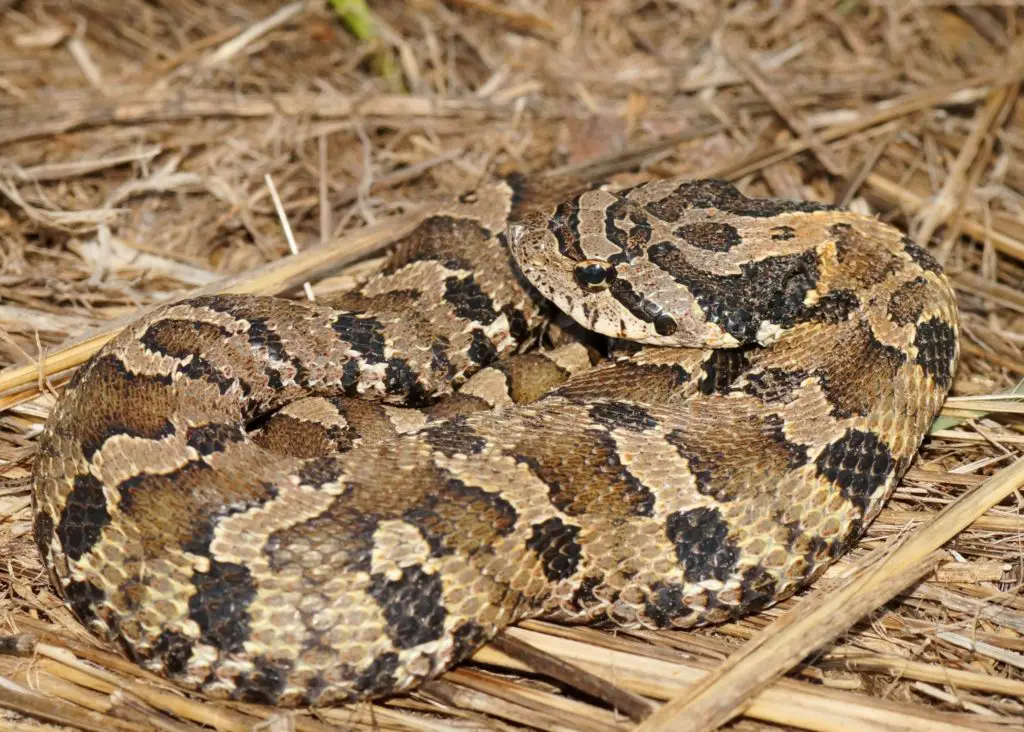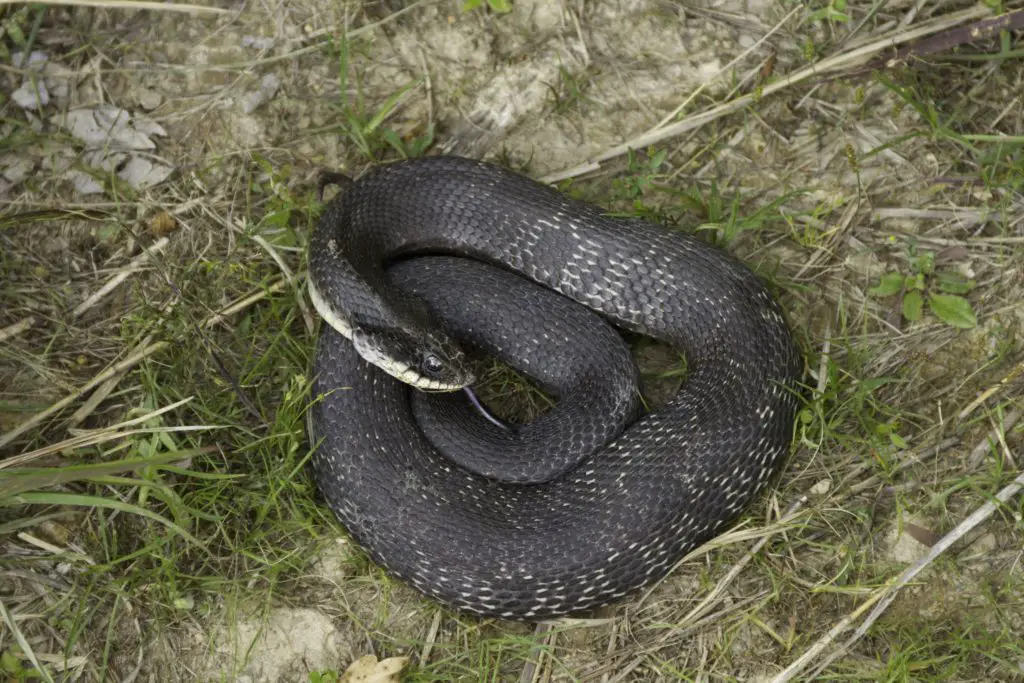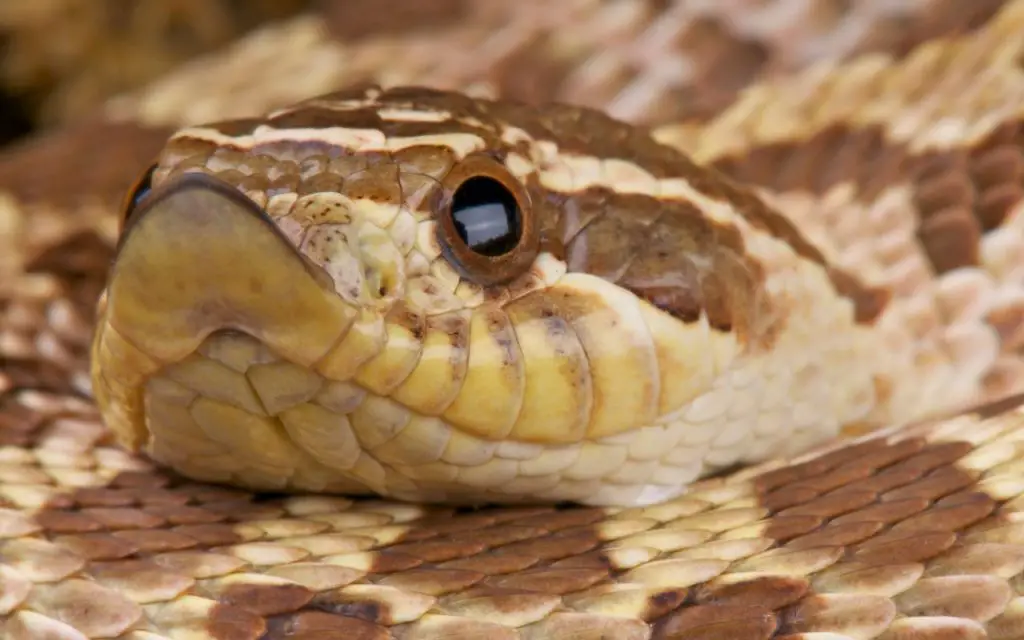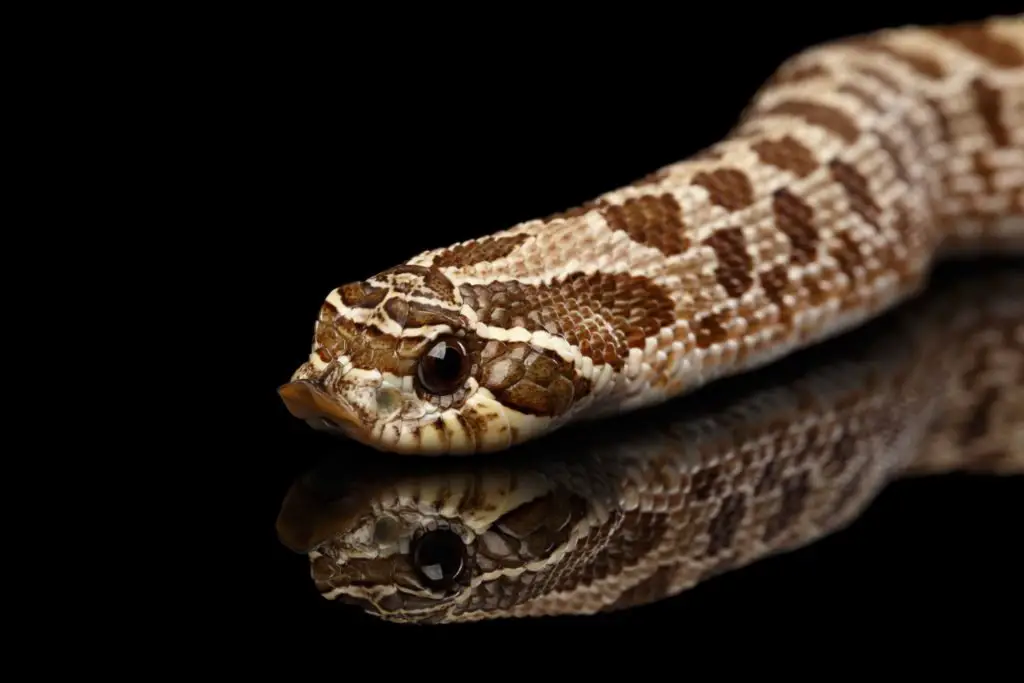Hognose Snakes are a unique group of burrowing Colubrids that can be found across most of North America. Perhaps the two most well-known species are the Eastern and Western Hognoses. Though they look similar in appearance, they vary in diet, habitat, distribution, and behavior.
In this article, I help you take a close look at these variations so we can answer the question: What’s the difference between Eastern and Western Hognose snakes?
We’ll start with some background information on the two species, then finish up by using it to outline the five key differences between them.
About Eastern Hognose Snakes
If you live anywhere between Massachusetts, Texas, and southern Iowa, you might have seen an Eastern Hognose Snake (Heterodon platirhinos) on your property. They have an unusual appearance, that you won’t have forgotten, after all!
Where I grew up in Indiana, Eastern Hognoses were not particularly common, but did turn up occasionally in woods and yards. They tend to occur in this type of location throughout their range.

Physical characteristics
As the name suggests, this snake has a slightly upturned, pig-like snout. It also has a particularly stout body , that makes it look much more robust than other snakes of similar size.
On average, adults tend to be around 24 – 36 inches (60 – 90cm) long when fully grown, with females almost always being bigger than males.
Across much of their range they are highly variable in color and pattern. In Indiana, for example, you often find either all black/gray individuals, or brightly colored ones with yellow, red, and black markings. The belly is plain yellow or gray.
Habitat and distribution
The Eastern Hognose is one of the most widely distributed snakes in Eastern North America. It lives all the way from Massachusetts in the east, to Ontario and South Dakota in the north.
Further south, its range stretches from Florida to Texas, and is only absent from southeast Louisiana. Overall, its favorite habitat is pine forests and old growth forests with sandy soil that it can easily dig in.
In some areas the all-black, or melanistic, animals are particularly common. This may be because of cooler temperatures, or more covered habitat, both of which make darker coloration beneficial. As dark colors absorb heat from the sun more efficiently, they help snakes in montane or northern areas warm up better.

Behavior and feeding habits
This snake is a bona fide toad specialist. Sometimes, they’ll take frogs too – but over 90% of their diet is toads.
This is quite possibly part of what has made them so successful. Toads are abundant across all of eastern North America, and Hognose snakes are able to dig them out of the ground with their pointed snouts.
As with other Hognose Snakes, a weak venom is produced to help incapacitate the toads. That said, it isn’t particularly strong, and certainly not a threat to humans.
Defensive behaviors and adaptations
Something you won’t forget if you find one is the elaborate threat display that most Eastern Hognose Snakes engage in. In takes place in several steps…
- Flattening the neck
- Hissing
- Rearing up
- Mock striking
- Rolling over and playing dead
If the snakes get all the way to the playing dead stage, and you still haven’t been frightened off, it gets seriously invested in the act! You can literally turn it over, and it will roll back over to convince you once more how “dead” it is. Sometimes, it will do this for up to 45 minutes.
Eastern Hognose Summary table
| Size: | 24 – 36 inches (60 – 90cm) |
| Habitat: | Pine and old growth forests with sandy soil |
| Distribution: | Almost all of eastern north America, as far north as Ontario |
| Feeding habits: | Toad specialists, sometimes eat frogs and salamanders |
| Defensive behavior: | Threat display and playing dead |
About Western Hognose snakes
The Western Hognose Snake (Heterodon nasicus), also known as the Plains Hognose, is an extremely popular pet, both in North America and Europe. In fact, it’s definitely in the top 5 most popular pet snakes around the world.
What a lot of people don’t know, however, is that it’s also a highly successful species in the wild, which can resist blistering heat and deep cold. It’s only kryptonite is excessively damp conditions.

Physical characteristics
At first glance, a Western Hognose snake looks like the Eastern species, but lighter and often with more defined blotches. The belly is black and orange. It also has a larger and more upturned snout.
All-in-all, its pattern looks a lot more like that of a Rattlesnake, and this probably grants it some protection by making predators think twice. Unlike the eastern species, its pattern is much less variable, and melanistic or otherwise different individuals are uncommon.
In terms of size, it varies a lot but tends to average 16 – 24 inches (40 – 60cm), with some exceptionally females reaching 35 inches (89cm). Again, the females are generally much larger than males.
Habitat and distribution
This species is most at home in plains or scrub habitat, and as such can be found over much of the great plains region, all the way from Alberta to Texas. Occasionally, it does also wander a bit and turn up in agricultural land or even desert.
This means its distribution is almost entirely to the west of that of the Eastern Hognose Snake. In fact, the two only overlap majorly in Oklahoma and Kansas.
Interestingly, it seems to be concerned with habitat type than temperature. It can survive the extreme cold of Canadian winters, and the extreme heat of the plains. What it seems to avoid though is wet habitat.

Behavior and feeding habits
Like its eastern cousin, the Western Hognose does like toads. It isn’t a strict toad specialist, though. In fact, there are records of Western Hognoses eating toads, lizards, rodents, nestling birds and even turtle eggs.
Given that they inhabit plains habitat, which is drier, they have to be a little less picky. They also move around more to look for prey. For example, they might move out of the prairie to a nearby swamp or lake during spring to find more food, then head back later in the year.
H3. Defensive behaviors and adaptations
Western Hognose Snakes go through a similar defensive display to the Eastern Hognose. It consists of, hissing, flattening the neck, and striking.
The only difference in my experience is that Western Hognoses seem to do more hissing than their eastern counterparts. It also seems that they don’t play dead quite as often, and when they do, they just don’t do it with the same commitment.
Could it be that they count on their pattern that mimics rattlesnakes as their primary defense? Who knows, but it is certainly true that mimicry works well for a lot of other plains snake species such as Bull Snakes, King Snakes, and the Great Plains Rat Snake.
Western Hognose Summary table
| Size: | 16 – 24 inches (40 – 60cm) |
| Habitat: | Plains, scrub, agricultural land, desert |
| Distribution: | Almost all of the great plains, from Alberta to Texas |
| Feeding habits: | Toad, lizards, rodents, reptile eggs, nestling birds |
| Defensive behavior: | Threat display and playing dead |

Eastern vs Western Hognose Snake: 5 key differences
So, what have we learned from covering the natural history and description of these two species? Basically, they are very similar – but there are five key differences between them. By learning these, you can quickly identify either one in the field. As always, I’ve tried to give you the most accurate, concise information possible – but if you have any questions after reading the list, please don’t hesitate to get in touch.
1. Their size
Though variable, Eastern Hognose snakes are larger than Western Hoggies by around 10 inches. Occasionally, you do get unusually large or small individuals from both species, but this is a good general indication of which one you’re dealing with.
2. Their coloration
Eastern Hognose Snakes are much more variable. Across their range, they regularly show up in four different color and pattern variations:
- Melanistic (all black or gray)
- Red and brown/black
- Tan and brown
- Yellow and black
Western Hognoses on the other hand almost always look the same, having a pattern of dark brown blotches on a tan and white background.
3. Where they’re found
The Western Hognose is found in the Great Plains, and almost all of its distribution is to the west of that of the eastern species.
The Eastern Hognose has a larger, more easterly range than other species. As such, there are a number of states and provinces where it is the only Hognose present. These are:
- New Hampshire
- Rhode Island
- Connecticut
- New York
- New Jersey
- Maryland
- Virginia
- West Virginia
- Ohio
- Pennsylvania
- Kentucky
- Tennessee
- Arkansas
- Louisiana
- Michigan
- Wisconsin
- Ontario (CAN)
4. Their snouts
Both species have pointed snouts, but the snout of the Eastern Hognose is smaller, and much less upturned. The Western Hognose’s snout is larger, and sharply upturned, giving it a very cute, comical look.
5. Their bellies
Eastern Hognose Snakes almost always have plain grey or light yellow bellies. The underside of their tails are also slightly lighter than their belly. Western Hognoses have black pattering down the center of their bellies, with some yellow or orange coloration around it. The underside of their tails is often almost solid black.

